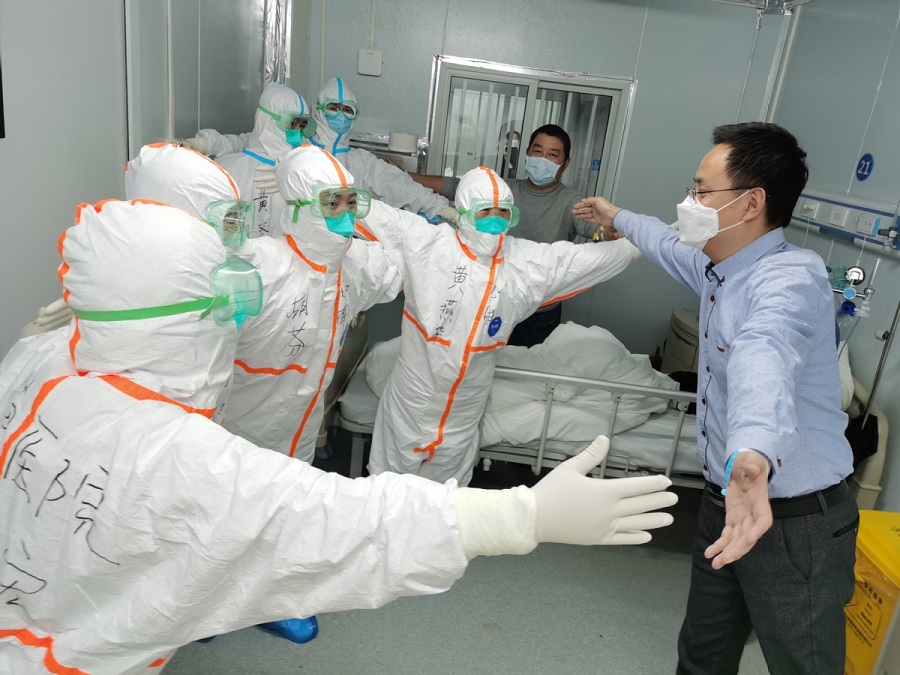Rapid action taken in city pays dividends

One of the first two patients to recover from the virus at Leishenshan Hospital says farewell to doctors and nurses before being discharged on Feb 18. GAO XIANG/FOR CHINA DAILY
At least 4,500 patients infected with the virus have been discharged from the two hospitals after they recovered, while a small number who are critically ill are still being treated at the facilities.
The decision to build the hospitals was taken as those in the city designated to treat patients with the virus became stretched to capacity in late January.
Shortly after the outbreak, huge numbers of patients in Wuhan flocked to hospitals, which were struggling to prevent medical workers being exposed to the virus. Many hospitals also said they were running short of protective equipment, and appealed to the public online for help.
With a lockdown enforced in Wuhan on Jan 23, and most businesses closed for the Lunar New Year holiday, transporting medical supplies became a problem.
Chen said, "The sooner we built the hospitals, the more patients would be saved-that's what we were thinking about during construction."
He recounted the first meeting he held for the project managers on Jan 24. He said he attempted to assess the human and material resources needed to build Huoshenshan Hospital, but found that because of the holiday, there was a problem in obtaining construction materials, machinery and other equipment.
In addition, most workers were not available as they had left Wuhan for the holiday, and suppliers had stopped shipments, Chen said.
Health officials overseeing the work said the facilities could be built quickly and at low cost by using portable prefabricated components. The emphasis was placed on speed and functionality.
"According to the project design, we needed at least 200 managerial staff, more than 10,000 workers, 1,800 container homes and 200-plus machines. However, we could only mobilize less than one-third of the total requirements. How could we complete the task within 10 days?" Chen said.
On Jan 25, he was told he had an additional task-overseeing the building of Leishenshan Hospital, which placed him under greater pressure.
In the following days, Chen and his team overcame countless difficulties and challenges that appeared to be insurmountable. He said he experienced unprecedented physical and mental stress at the time, but both the central and local governments helped him mobilize resources needed for the projects.
"Every time we were on the brink of despair, we would emerge from our difficulties," he said. "When we said we were working on novel coronavirus hospitals in Wuhan, workers, suppliers and transportation companies across the country gave us their support. As a result, construction workers and materials poured in."
